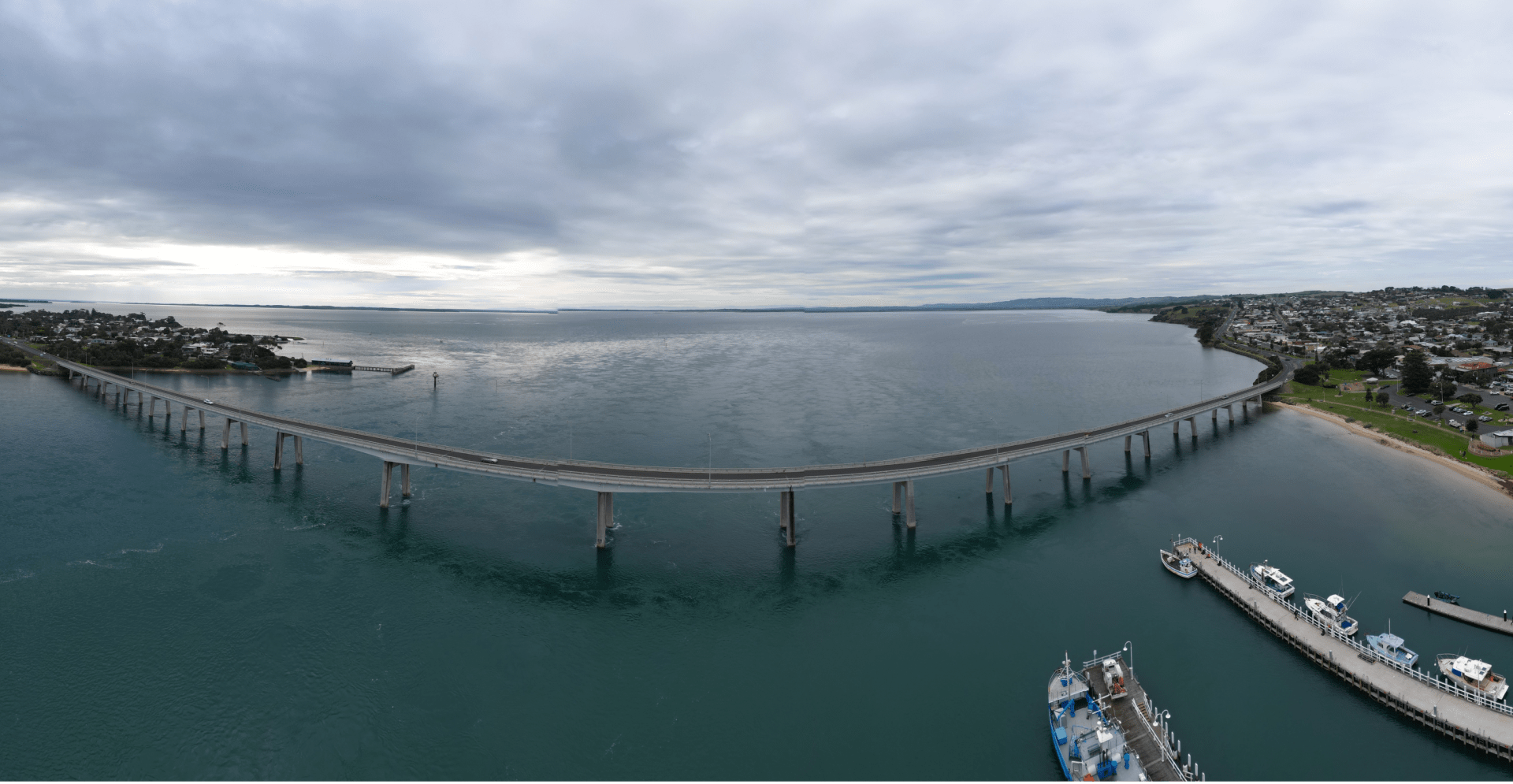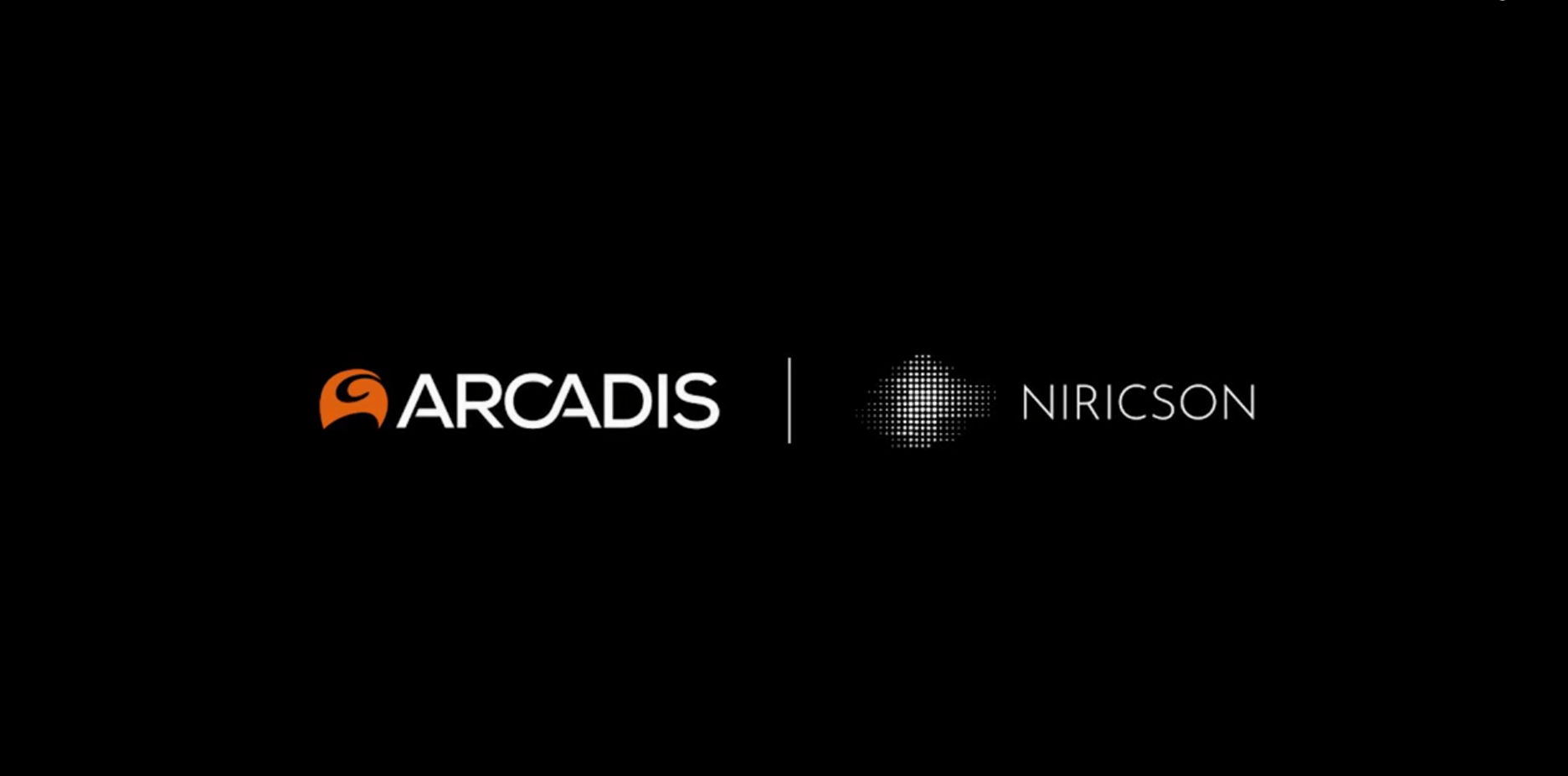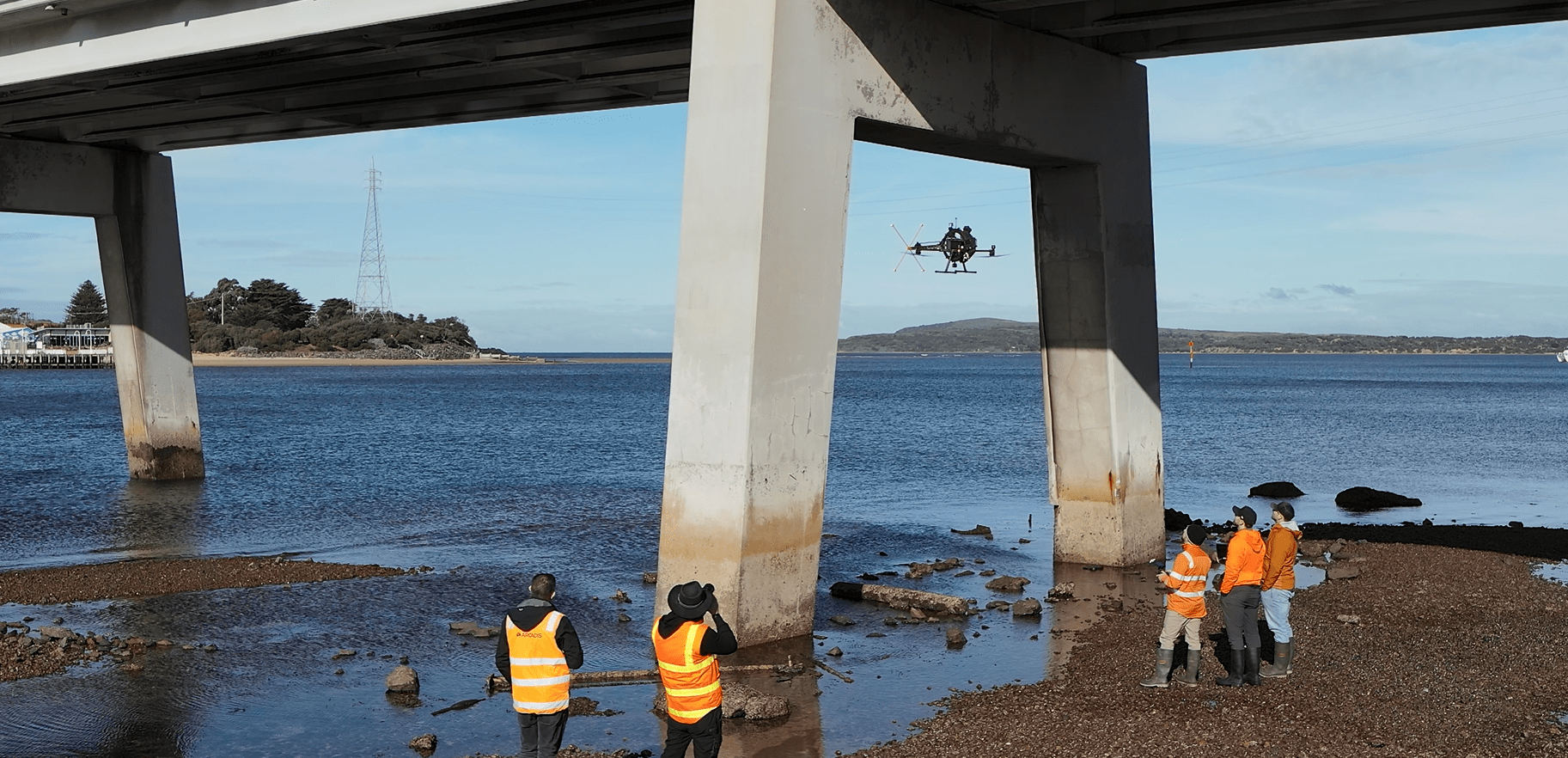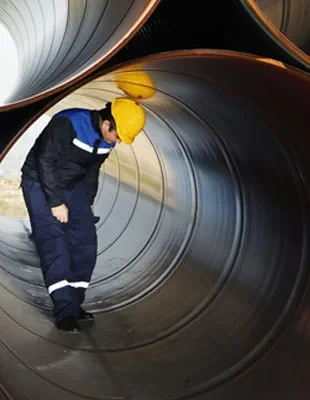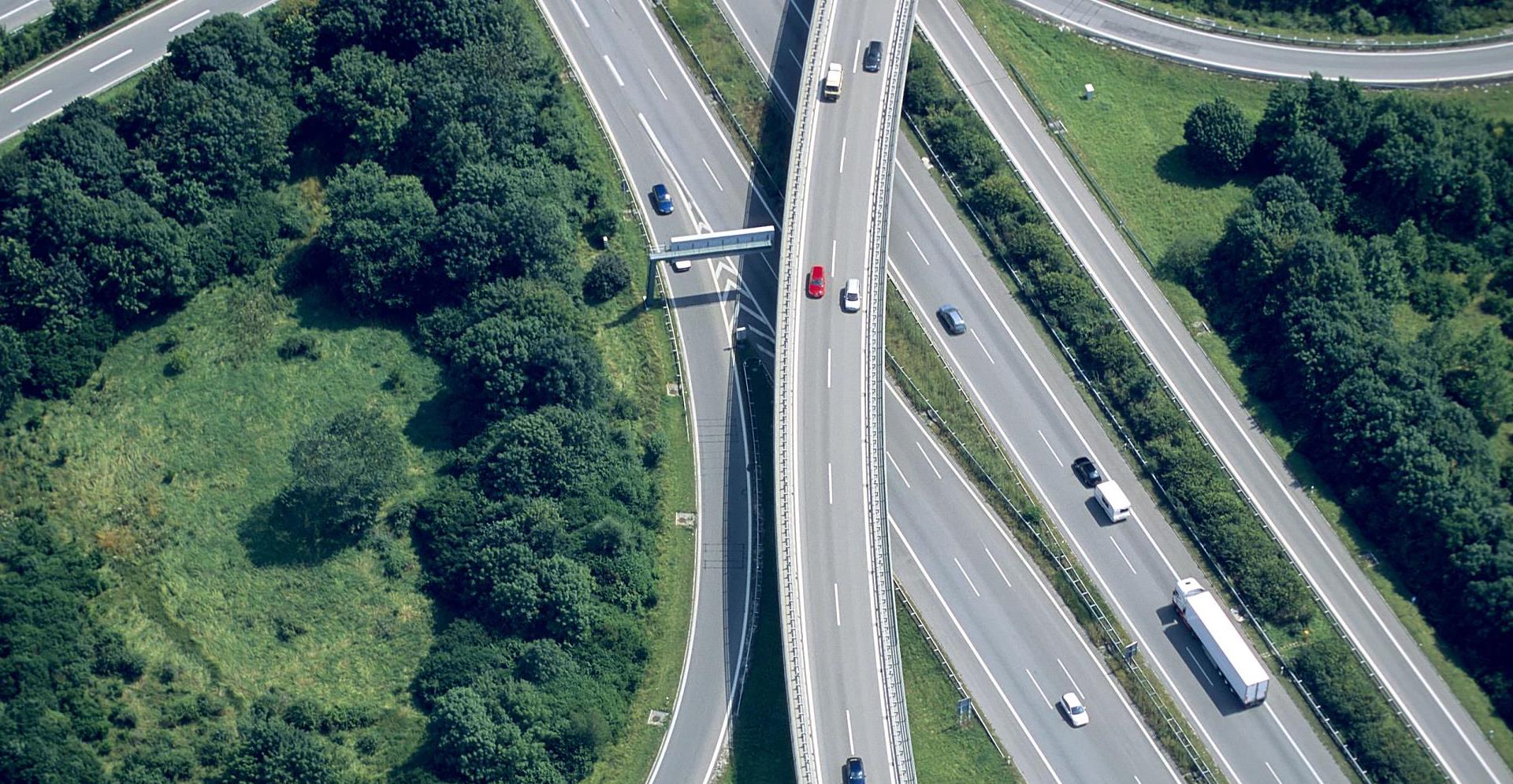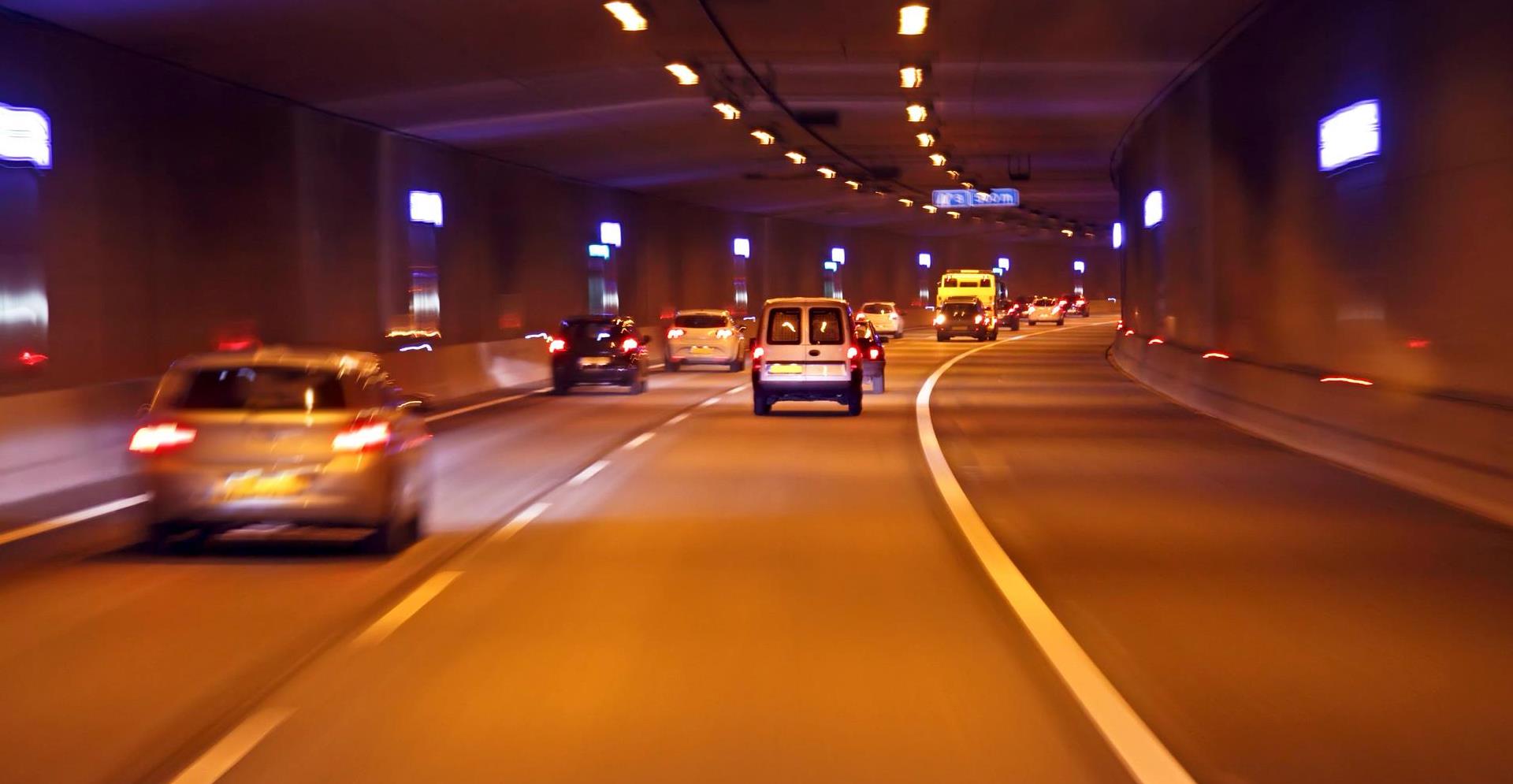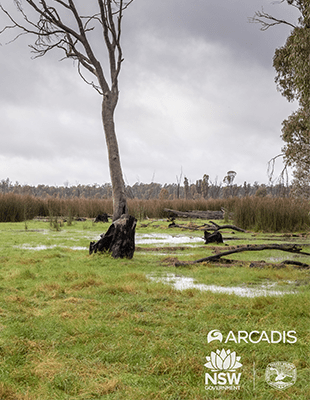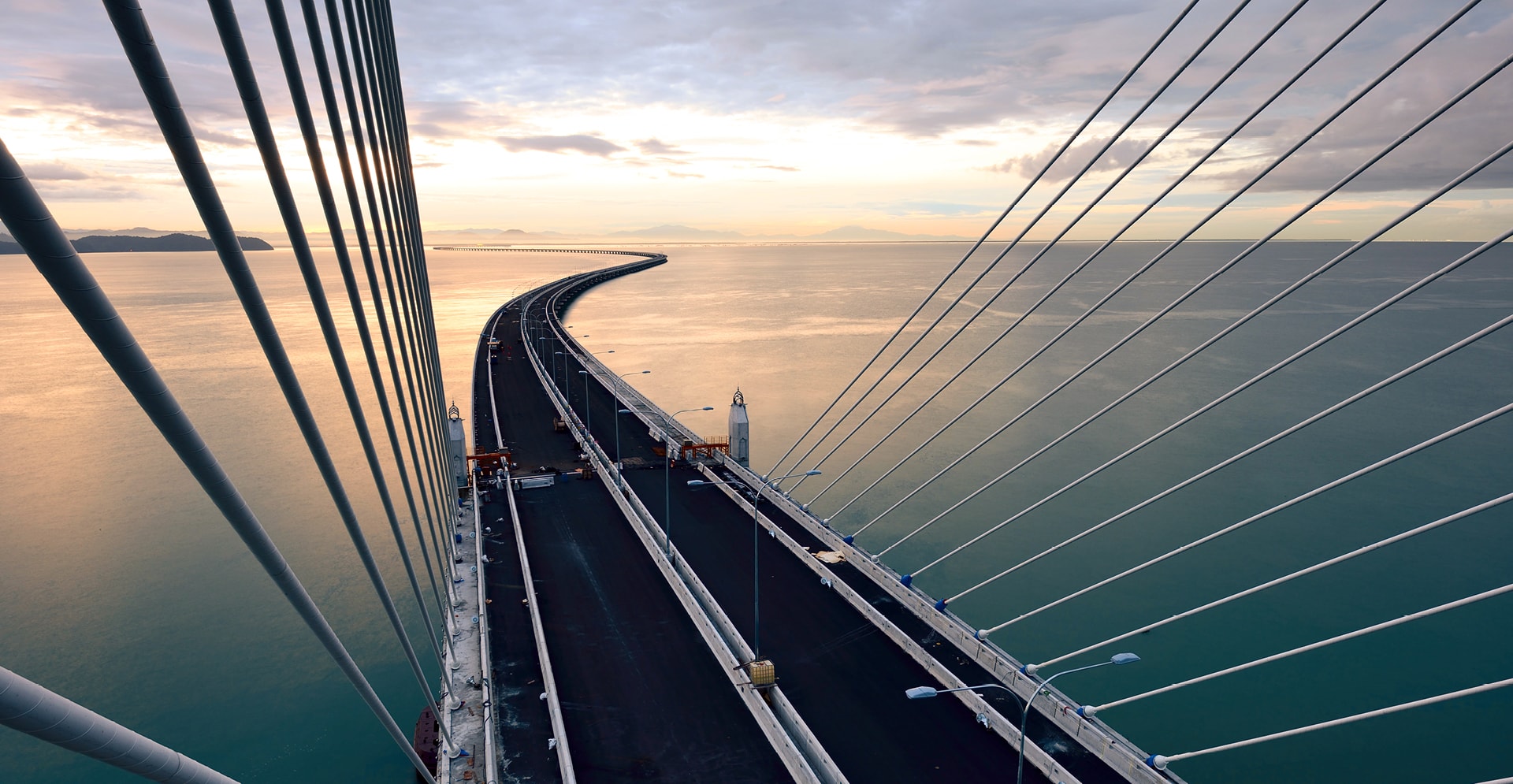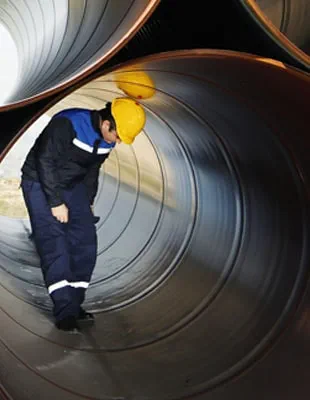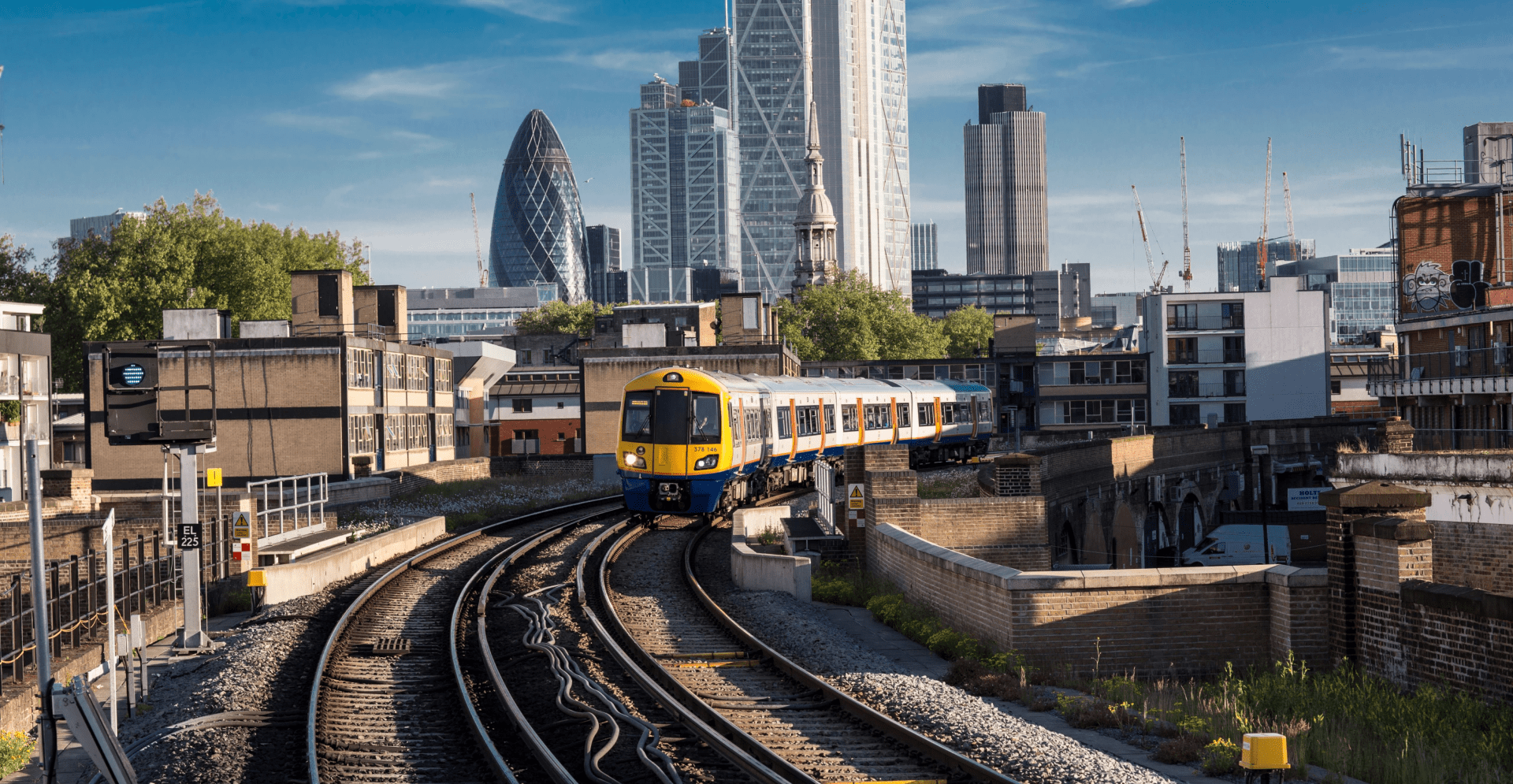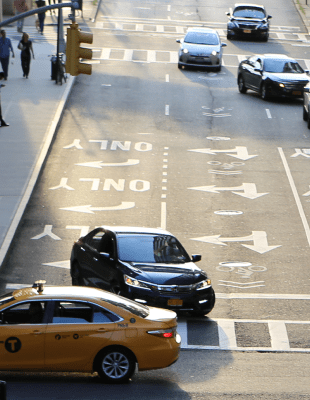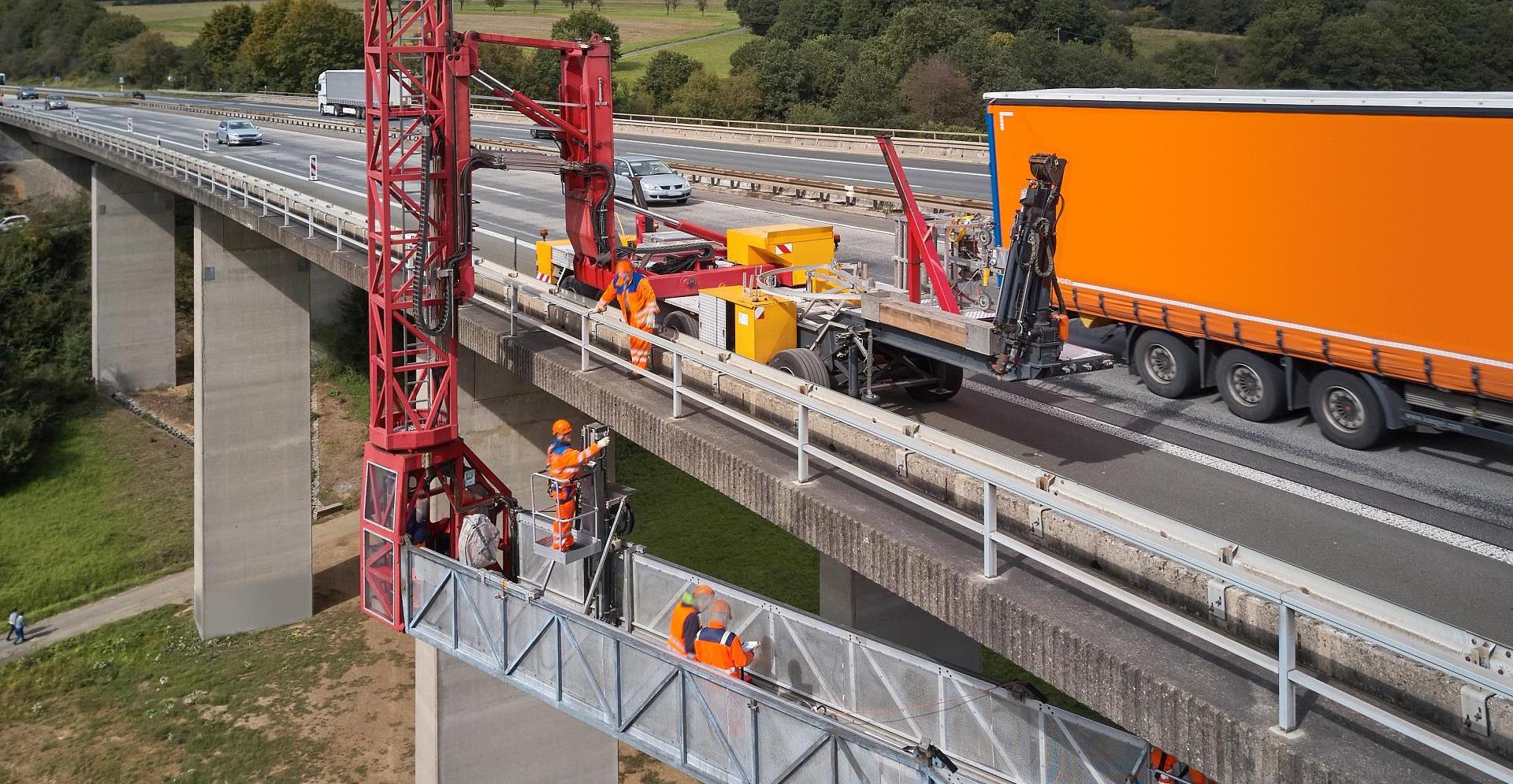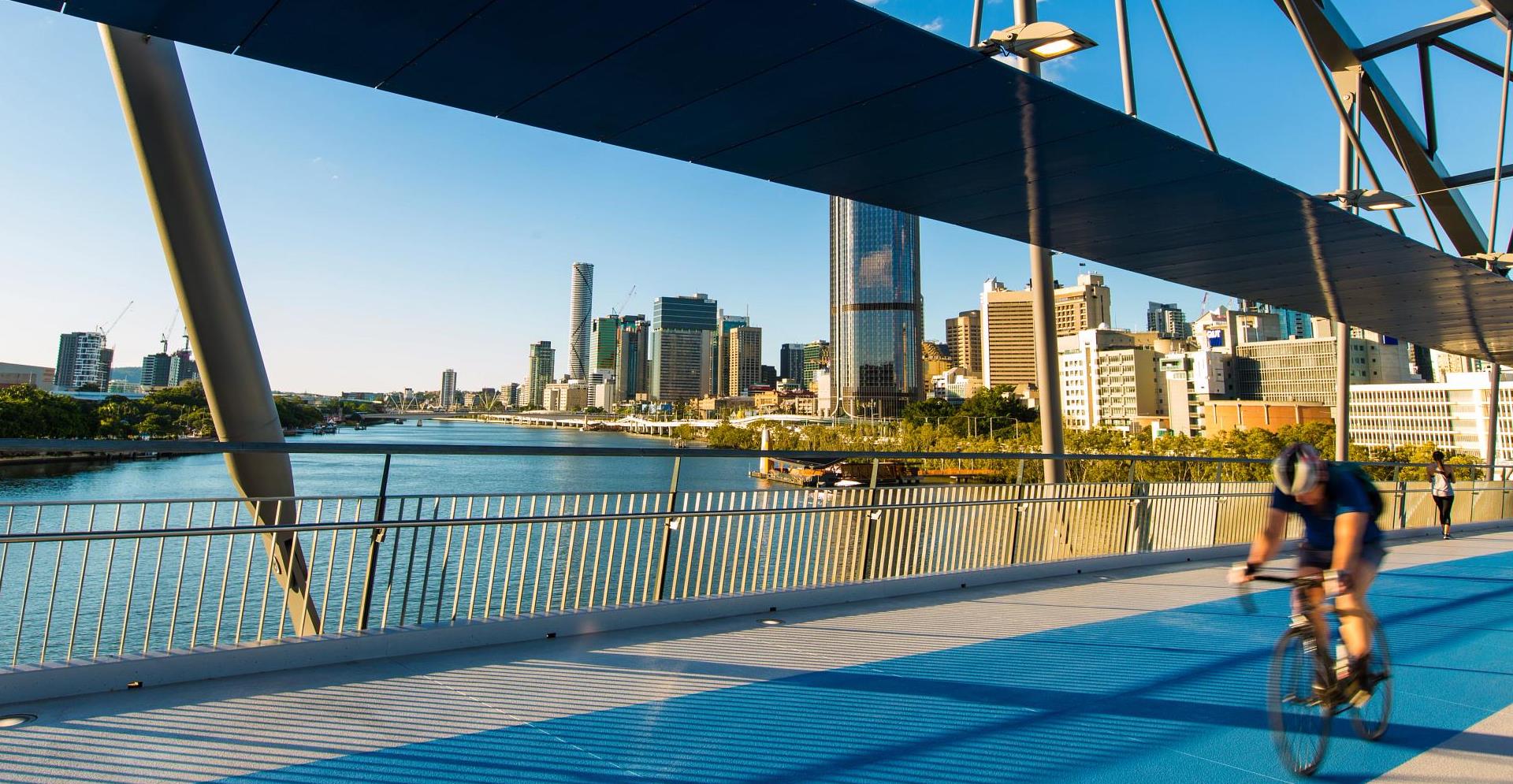Table of Contents
The challenge
As the sole access point to the island inspections of San Remo Bridge can be difficult and have previously required prolonged traffic closures.
The San Remo Bridge connects Phillip Island to the mainland and is a vital transportation link for essential supplies, tourism and business operations. It’s ongoing preservation and functionality is critical for the surrounding communities. As the sole access point to the island, inspection and maintenance of the bridge can be challenging due to limited accessibility, safety risks associated with working at heights and navigating water. They also require prolonged traffic closures. This led the Department of Transport & Planning (DTP) to seek alternative inspection methods to maintain a consistent and robust inspection regime - crucial for preserving the safety and longevity of San Remo bridge.
The solution
Inconsistent inspections on infrastructure can lead to severe consequences; compromising safety, increasing costs, causing operational disruptions, legal issues and structural degradation.
Arcadis utilised Bridge Health to conduct a proof of concept for the San Remo Bridge inspection using automated technologies including drones, AI and machine learning. This enabled a detailed and efficient assessment reducing the risk of missing critical defects and minimising disruption to residents and travellers.
Using AUTOSPEXTM (ecosystem partner’s Niricson's AI based defects detection and quantification software) and DRONIC (Niricson's patent-pending acoustic data collection technology) we collected and analysed optical imagery, lidar, acoustic and thermal data which provided digital insights and accurate defect quantification for predictive asset management.
Bridge Health has numerous benefits, including increased efficiency, enhanced safety, cost-effectiveness and precise and consistent data capture. Drone inspections minimise potential human error and subjectivity, allows for access to challenging areas, offers real-time analysis and comprehensive documentation. The improved predictive maintenance capabilities of Bridge Health contributed to more effective and reliable bridge inspections and maintenance strategies for DTP.

The Impact
An efficient, safer and cost-effective means of inspecting Victoria's large transport structures while improving data accuracy and reducing downtime.
Drone technology enabled access to areas that are difficult for human inspectors to reach, even with ropes and other specialised equipment. In San Remo this included underneath the bridge deck, allowing for a more thorough assessment of the entire structure. These technologies cut carbon emissions, reduces wastage and guarantee safer, less disruptive inspections. By employing drones, we minimised traffic interruptions and reduced safety risks for inspectors, providing unparallelled efficiency and safety in bridge assessment.
Significant labour and resource savings can also be made on larger bridge inspections. Drones can cover large areas more quickly than manual inspectons, this saving efficiency in time and labour hours.
Early defect detection through AI-driven analysis ensures proactive interventions, preventing major issues and potentially saving millions in long-term repair costs.
However, the greatest advantage of utilising drones and AI in bridge inspections lies in the invaluable data that can be collected and monitored over time. By collecting this data consistently over time and storing it in a digital format rather than PDFs or written reports, it becomes possible to analyse it alongside other relevant data such as climatic changes, traffic loads, traffic speeds and major events like flooding. This enables owners to gain a deeper understanding of the structure's behavior and deterioration patterns, identify trigger points, and assess the impact of strengthening or repair solutions. This powerful data not only enhances maintenance practices and extends the lifespan of structures but also informs the design of stronger, better, and more sustainable structures in the future.
A well-maintained bridge ensures uninterrupted goods flow, supporting local businesses and encouraging tourism – all vital for economies on Phillip Island.
Behind the solution
Not done reading?
This also might be interesting for you
- Related Projects
- Related Insights
- Related Blogs


